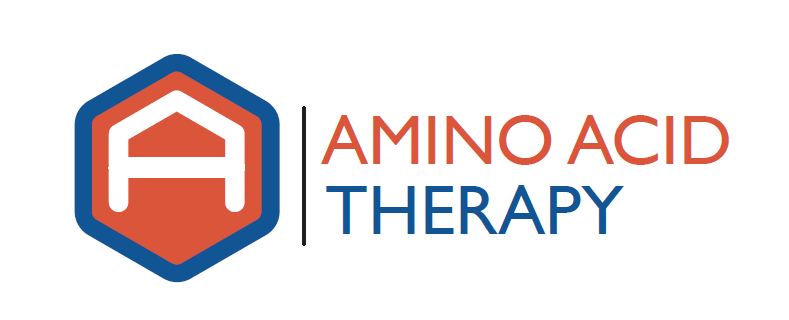 There are a lot of disorders related to neurotransmitter dysfunction, including depression, anxiety, insomnia, migraines, trichotillomania, OCD, RLS and Parkinson’s disease, among others. The vast majority of people with these conditions (aside from RLS and Parkinson’s) are serotonin dominant, which means that these people normally require much more support for serotonin than the catecholamines (dopamine, norepinephrine and epinephrine) in order to optimize neurotransmitter function. On the opposite end of the spectrum are those people that are dopamine dominant; this includes people with RLS and Parkinson’s Disease. In addition, there is a small group of people with conditions that are typically serotonin dominant (roughly between 6-12%) that actually end up needing significant dopamine support (i.e, they are dopamine dominant). The only way to determine this is via specialized urine testing. To make matters more complicated, it turns out that there is a third group of people that need significant support for both the serotonin and catecholamine systems; these people are typically labeled “hybrids”.
There are a lot of disorders related to neurotransmitter dysfunction, including depression, anxiety, insomnia, migraines, trichotillomania, OCD, RLS and Parkinson’s disease, among others. The vast majority of people with these conditions (aside from RLS and Parkinson’s) are serotonin dominant, which means that these people normally require much more support for serotonin than the catecholamines (dopamine, norepinephrine and epinephrine) in order to optimize neurotransmitter function. On the opposite end of the spectrum are those people that are dopamine dominant; this includes people with RLS and Parkinson’s Disease. In addition, there is a small group of people with conditions that are typically serotonin dominant (roughly between 6-12%) that actually end up needing significant dopamine support (i.e, they are dopamine dominant). The only way to determine this is via specialized urine testing. To make matters more complicated, it turns out that there is a third group of people that need significant support for both the serotonin and catecholamine systems; these people are typically labeled “hybrids”.
The Hybrid
A person that is serotonin dominant may require some additional dopamine support (in the form of L-dopa from mucuna pruriens); however, most of these people require less than 480 mg of additional L-dopa in order to optimize their neurotransmitter function. Likewise, many people that are dopamine dominant may require some additional serotonin support; however, most of these people require less than 300 mg of 5-HTP to optimize their neurotransmitter function.
The hybrid is a special case where a person requires significant dopamine support (usually in the range of 2.0 grams to 7.2 grams of L-dopa per day) along with significant serotonin support (usually in the range of 600 mg to 2100 mg 5-HTP per day). Normally, a person that is a hybrid is found by first determining the amount of L-dopa that is needed to optimize symptoms (and/or the upper tolerable limit of L-dopa) and then using additional 5-HTP to ‘fine tune’ neurotransmitter function with the goal of complete symptom elimination.
For example, Stephanie came into us with symptoms of depression, anxiety, ADHD and insomnia. After her first urine test, it was determined that she was likely dopamine dominant, so we initiated a dopamine challenge. Stephanie saw absolutely no change (positive or negative) during the dopamine challenge, so we knew that she was (at least) dopamine dominant. We worked with Stephanie to steadily increase her L-dopa dosing while running periodic urine tests to make sure her body was using the L-dopa as intended. As we progressed, all of Stephanie’s symptoms slowly improved. Once we reached Stephanie’s upper limit of L-dopa (3.6 grams L-dopa), her ADHD and depression were almost completely under control, and her anxiety and insomnia had steadily improved, although were not eliminated.
At this point, we started to slowly increase Stephanie’s serotonin support while running urine tests to guide our recommendations. Once we reached 1200 mg of 5-HTP along with 4500 mg L-tyrosine, her anxiety disappeared and she began sleeping soundly through the night. The entire process to get Stephanie optimized took a little over 5 months.
The Challenge
The main challenge when working with someone that requires high levels of both serotonin and dopamine support is to keep them motivated and focused during the process of neurotransmitter optimization. Oftentimes, these people come in presenting with multiple symptoms of imbalance; during the process of adjusting their amino acid dosing, some of these symptoms will usually improve and/or resolve, however, some may not. It is at this point we have to keep our eye on the ball and use the lab data to guide our recommendations.
For instance, in Stephanie’s case, all of her symptoms improved somewhat during the dopamine optimization phase of the process with her depression and ADHD resolving almost completely. However, she still had significant anxiety and insomnia present. Naturally, Stephanie began to focus more on her anxiety and insomnia, wondering out loud why they remained while the depression and ADHD resolved (which of course made her anxiety and insomnia worse). It took several reiterations to help Stephanie understand that this is all part of the process; different symptoms of imbalance will likely require different levels of amino acid precursors (i.e, everything is not going to get better all at once). It is a progression. Rather than looking at what is still not “right”, we asked her to look at everything that had already improved – that she had already eliminated her depression and “life-long” ADHD and that her anxiety and insomnia, while not gone, had certainly improved and would continue to do so as long as we continued making progress towards optimizing her neurotransmitter function (i.e, don’t quit!).
Working with a provider that is skilled and experienced in working with people using amino acid therapy is paramount to success when working with complicated cases, such as hybrids. In order to find a provider near you, please contact NeuroResearch: www.neurosupport.com or contact us – we’d be happy to assist you.

